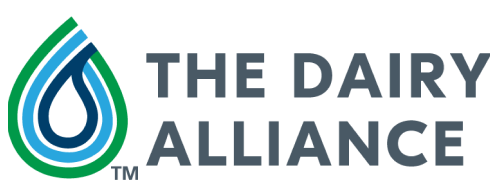Green Practices on Southeast Dairy Farms
As Earth Month ends, we are highlighting some of the initiatives and green practices on dairy farms in place across the Southeast region. Read on to discover what is being done to keep milk a nutritious mealtime option for our families for generations to come.
Green Practices on Dairy Farms
Water is an important resource for plants and animals alike, so water conservation is an important practice on dairy farms. At Hillcrest Farms, water is recycled up to four times to cool milk in the milking parlor, provide drinking water for cows, clean stalls, and irrigate crops.
Between 2007 and 2017, improved farming practices and production systems achieved 30% less water required to produce each gallon of milk. This water reduction is equivalent to eliminating the average water consumption of approximately 29 million US households!
But water is not the only resource that is recycled. Ed-Mar Dairy reclaims the sand used in their free stalls as bedding. A flush system keeps the barn clean and helps recycle water and sand. When the barn is flushed, water is filtered and pumped to a tank to be used again, while particles like sand are pulled out. Through this system, Ed-Mar reuses 75% of the sand.
Ingleside Dairy Farm is doing its part to reduce emissions outside of the barn by practicing no-tillage planting of the crops that feed the cows. Plowing and tillage erode soil over time and release stored carbon dioxide. Adopting low- or no-till practices minimizes creates healthier soil for crops. By adopting no-tillage planting, the farm is minimizing physical disturbance of the soil, keeping carbon dioxide stored in the ground, and creating healthier soil for crops to thrive.
Another way to improve soil quality is implemented on Green Farm through a silvopasture system to better care for the land’s health. Silvopasture integrates trees, forage, and cows in a mutually beneficial way. These systems create a healthy ecosystem, providing environmental benefits like soil enrichment and diverse habitats.
Similarly, Paulson Family Farm planted over 2,000 trees native to the area to help strengthen the nearby riverbank, reduce nutrient runoff, sequester carbon, and create a wildlife habitat for native birds and pollinators on the farmland.




